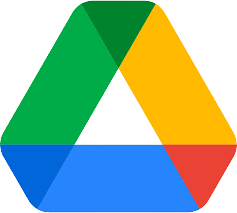PikPak to iCloud Drive: Seamless File Migration
A detailed, easy-to-follow guide for transferring your files from PikPak to iCloud Drive — secure, smooth, and perfectly aligned with Apple’s ecosystem.
Introduction
With the growing need for unified cloud storage, moving your data from PikPak to iCloud Drive is a smart upgrade. Whether you want tighter integration with your Apple devices or a more stable long-term cloud environment, this article explains why the move makes sense and how to complete it efficiently using modern tools like CloudsLinker.
Quick Navigation
Understanding PikPak
PikPak is widely appreciated for its speed and simplicity, offering quick uploads and a clean interface for managing media and documents. It’s a go-to choice for users who want a fast, no-fuss way to save and share large files online.
However, if you value tighter integration with Apple’s ecosystem, automatic syncing across devices, or long-term cloud stability, migrating your files to iCloud Drive could be the smarter move. This guide will help you make that transition efficiently using CloudsLinker.
Features of PikPak
- High-Speed Uploads: Upload your files quickly, keeping you productive without long waiting times.
- Intuitive File Management: Organize and locate your content effortlessly using PikPak’s clean and simple interface.
- Easy Sharing: Share links or folders instantly, making collaboration with others straightforward.
Advantages of Using PikPak
PikPak’s performance and usability make it ideal for users who need a lightweight, fast, and reliable platform for managing cloud files without complex settings.
- Free Storage Tier: Get started with free storage space and upgrade later as your data grows.
- Fast Media Access: Enjoy quick previews and streaming for videos and photos.
- Essential Security: PikPak provides encryption and permission control to keep your data protected.
Exploring iCloud Drive
iCloud Drive is Apple’s integrated cloud storage service that automatically syncs your files across macOS, iOS, and iPadOS devices. It’s designed to keep your content accessible and up to date wherever you are.
By moving to iCloud Drive, you benefit from Apple’s native file system integration, privacy standards, and effortless backup solutions — making it ideal for users seeking stability and cross-device convenience.
Key Features of iCloud Drive
- Seamless Apple Integration: Automatically syncs documents, photos, and folders across your iPhone, iPad, and Mac.
- Secure Data Handling: Files are protected with Apple’s encryption, ensuring your data remains private during transfer and storage.
- Cross-Platform Availability: Access your iCloud Drive through the Files app, Finder, or web interface on any device.
Benefits of Using iCloud Drive
- Unified Storage Experience: Enjoy automatic syncing and organization across all Apple devices.
- Enhanced Security: Apple’s end-to-end encryption keeps your data secure and private.
- Effortless Collaboration: Easily share files and folders with others while maintaining control over access permissions.
Why Transfer Files from PikPak to iCloud Drive?
Moving your files from PikPak to iCloud Drive improves synchronization, organization, and accessibility across your Apple ecosystem. Below are the main reasons users choose to make this migration:
- Improved Data Security: iCloud Drive uses Apple’s encrypted infrastructure, offering better data protection and reliability than third-party cloud services.
- Seamless Integration: Once transferred, your files automatically appear in Finder and the Files app, syncing in real time across all Apple devices.
- Automatic Backup & Sync: Your data stays backed up and available from anywhere, reducing the need for manual uploads or transfers.
- Cross-Device Access: Access your documents, photos, and videos from Mac, iPhone, iPad, or even Windows using iCloud for web.
Switching from PikPak to iCloud Drive helps you unify your workflow and improve data consistency across devices. With automatic syncing and built-in Apple security, iCloud Drive provides a stable, secure, and integrated experience for all your files.
Preparing for Migration
Before starting your transfer from PikPak to iCloud Drive, follow these steps to ensure a smooth and secure migration:
- Check iCloud Storage Space: Confirm that your iCloud plan has enough storage to accommodate your PikPak files. You can upgrade your iCloud plan in Settings if necessary.
- Back Up Your PikPak Files: Create a backup of your important data on a local drive or another cloud service before migration to prevent accidental loss.
Completing these preparation steps ensures your transfer from PikPak to iCloud Drive is reliable and safe. Once verified, you can confidently proceed to start your migration using CloudsLinker.
The Transfer Process
Transferring files from PikPak to iCloud Drive using the web interface is straightforward. Follow these steps to ensure your data moves safely and efficiently.
Step-by-Step Guide to Transfer Files
Step 1: Download Files from PikPak
Sign in to your PikPak account. Locate the files or folders you want to move, then download them to your computer. PikPak may automatically compress multiple files into a ZIP archive — once the download finishes, extract the ZIP to access all individual files.
Step 2: Organize Files Before Upload
Before uploading to iCloud Drive, organize your files for easier management. Rename them for clarity, group them into folders, and remove duplicates or unnecessary content. Well-structured folders make syncing faster and easier once uploaded.
Step 3: Upload Files to iCloud Drive via Web
Go to iCloud Drive on the web and sign in with your Apple ID. Drag and drop the prepared files or folders into the iCloud Drive interface, or click the upload icon to select them manually. Once uploaded, your files will automatically sync across all Apple devices connected to your account.
If you encounter upload limits or large files, consider splitting them into smaller parts before uploading. This ensures a more stable and reliable transfer process.
Tools and Services for the Transfer
About CloudsLinker:
CloudsLinker provides a fast and reliable way to transfer data between multiple cloud platforms, supporting over 30 services such as PikPak, iCloud Drive, Google Drive, OneDrive, Dropbox, and more. All transfers occur directly in the cloud, meaning your local internet bandwidth and computer resources are not used. This ensures a stable, secure, and efficient migration process — even for large-scale data transfers.
Step 1: Linking PikPak to CloudsLinker
Visit CloudsLinker and navigate to the 'Add Cloud Account' page. Select the PikPak icon and you’ll be redirected to PikPak’s official login portal. Enter your PikPak account credentials to authorize access. CloudsLinker encrypts your login information to maintain privacy and security. Once successfully linked, your PikPak storage will appear in your CloudsLinker dashboard.

If your PikPak account is tied to a Google or Facebook login, create a standalone PikPak password before linking. Log into the official PikPak website, go to Account and Security, and set a new password to enable third-party integrations.
Step 2: Adding iCloud Drive to CloudsLinker
Under the 'Add Cloud Account' section, choose iCloud Drive as the target destination. Enter your Apple ID (iCloud account email) and password when prompted. If Apple’s two-factor authentication (2FA) is enabled, enter the verification code sent to your trusted device or phone to complete the login process. Once verified, your iCloud Drive will be successfully linked and ready for file transfers.

If login fails, ensure that 'Access iCloud Data on the Web' is enabled under your Apple ID settings and that 'Advanced Data Protection' is turned off — iCloud Drive API connections are currently unsupported when ADP is enabled.
Step 3: Configuring the Transfer in CloudsLinker
Open the 'Transfer' section in CloudsLinker. Choose PikPak as the source and iCloud Drive as the destination. Select specific files or folders to migrate, and configure additional options such as transfer mode (copy or move) and scheduling. Once initiated, CloudsLinker performs the migration in the cloud, so you can close your browser or turn off your computer without interrupting the process.

You can also filter file types (e.g., transfer only videos or documents) or set automatic tasks to run periodically. CloudsLinker’s background automation ensures stable transfers even with large datasets.
Step 4: Monitoring Transfer Progress
Go to the 'Task' section in CloudsLinker to track your ongoing transfers. You can see file-by-file progress, completion percentages, and error logs. If any files fail or pause, you can resume them directly without restarting the entire transfer.
Step 5: Verifying the Transfer
After the process completes, open your iCloud Drive through your browser or Finder (on Mac) to verify that all files from PikPak were successfully uploaded. Check file sizes, timestamps, and folder structures to confirm data integrity.
Organizing Your iCloud Drive Storage
After successfully transferring your files from PikPak to iCloud Drive through CloudsLinker, it’s a good idea to tidy up your storage for easier navigation and better long-term organization:
- Create structured folders: Set up folders in iCloud Drive based on file types or projects. For example, keep documents, photos, and videos in separate categories to make it easier to find and manage your content.
- Use consistent naming: Adopt a clear and uniform naming pattern for files and folders. This makes searching and syncing smoother across your Mac, iPhone, and iPad.
- Verify syncing and availability: Open Finder or the Files app to confirm that all files are correctly synced and available on every Apple device connected to your iCloud account.
Improving iCloud Drive Security
After migration, keeping your iCloud data secure is essential. Follow these best practices to maintain privacy and ensure smooth access across your devices:
- Enable Two-Factor Authentication (2FA): Make sure your Apple ID uses two-factor authentication to protect against unauthorized access. This adds an extra layer of security whenever you sign in to your iCloud account.
- Manage device access: Regularly review which devices are signed in with your Apple ID and remove any that you no longer use.
- Review shared folders: If you’ve shared folders or files from iCloud Drive, check sharing permissions and adjust access levels as needed.
Post-Transfer Verification and Optimization
After migrating your data from PikPak, take these extra steps to confirm everything is in order and to optimize your iCloud Drive setup:
- Confirm folder mapping: Check that all transferred files are in the correct folders and that no items were misplaced during migration.
- Free up local storage: If your Mac is set to ‘Optimize Mac Storage,’ iCloud Drive will automatically keep only recent files locally while storing older ones in the cloud. Verify this setting in System Settings > Apple ID > iCloud.
- Automate regular backups: Use Time Machine or another backup tool to regularly archive your iCloud Drive data locally or to an external drive for additional safety.
FAQs on Migrating from PikPak to iCloud Drive
Is it safe to transfer files from PikPak to iCloud Drive using CloudsLinker?
Can I connect my iCloud Drive directly to CloudsLinker?
Why move files from PikPak to iCloud Drive?
How can I prevent issues during the migration?
Does CloudsLinker charge for PikPak to iCloud Drive transfers?
Watch the PikPak to iCloud Drive Transfer Tutorial
See exactly how to use CloudsLinker to move your files from PikPak to iCloud Drive. This video walkthrough covers adding both accounts, handling iCloud verification codes, and managing transfers directly in the cloud — without using local storage or bandwidth.
Conclusion
Migrating from PikPak to iCloud Drive is more than a storage switch — it’s about improving accessibility, synchronization, and ecosystem integration. This guide outlined how to prepare and perform the migration securely with CloudsLinker, giving you a reliable method to move your files without local downloads. By shifting to iCloud Drive, your data becomes part of Apple’s robust infrastructure, available across Mac, iPhone, and iPad with automatic updates and native file management. In a world where seamless connectivity and security matter more than ever, this transition ensures your digital assets remain both protected and accessible wherever you go.
Online Storage Services Supported by CloudsLinker
Transfer data between over 44 cloud services with CloudsLinker
Didn' t find your cloud service? Be free to contact: [email protected]
Further Reading
Effortless FTP connect to google drive: Transfer Files in 3 Easy Ways
Learn More >
Google Photos to OneDrive: 3 Innovative Transfer Strategies
Learn More >
Google Photos to Proton Drive: 3 Effective Transfer Techniques
Learn More >











































